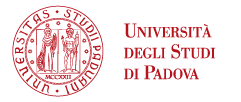ARNOLD
Acronimo: ARNOLD
Titolo: Annual Rings to better understand long-term abiotic drivers of shrub growth at the NOrthernmost Limits of their Distribution
Bando: INTER-ACT Transnational Access
Durata: Inizio: 1/6/2019 - Fine: 31/12/2020 (19 mesi)
Coordinatore: Lunds Universitet (Sweden)
Budget totale EU: € 10.000.000,00
Budget TESAF: € 6.350,00
Responsabile scientifico: Marco Carrer
Team: Angela Luisa Prendin, Lucrezia Unterholzner, Lorenzo Marini
Riassunto: Climate change is observed and predicted to profoundly affect Arctic and Alpine ecosystems. These temperature-limited environments, at the northernmost or uppermost limits of woody plant distribution, change at a faster rate than the global average. Growth responses of arctic-alpine shrubs to climate change are variable and influenced by different factors. Besides the rising in temperature since the mid-20th century, a shift in snowpack behavior with earlier snowpack melting has also been observed to affect the vegetation productivity in several temperaturelimited regions. A key to understanding the plasticity of responses to climate change is a yearlyresolved analysis of growth at the intra-individual to the community level. Currently, there is a lack of knowledge on the long-term (decades to centuries) individual, species and interspecific growth variability across environmental gradients. Focusing on wide distributed taxa (Juniperus communis, Salix ss.pp. and Betula ss.pp.), ARNOLD aims at uncovering the information archived in annual rings and xylem anatomical traits (e.g. lumen size or cell-wall thickness) to gain fundamental new insight on how the plant responses scale from individuals to communities. With ARNOLD we provide a retrospective quantification of growth and wood anatomical traits integrating the state-of-the-art quantitative wood anatomical analyses with classical dendrochronology, from Arctic-Alpine shrub species and keep on extending our shrubs network. This will permit to soundly test the species sensitivity across environmental gradients, tests the significance of ring width and xylem traits as climatological proxies and disentangles the abiotic factors influencing growth to better understand the possible future shrub dynamics.
Sito Web: https://eu-interact.org/






